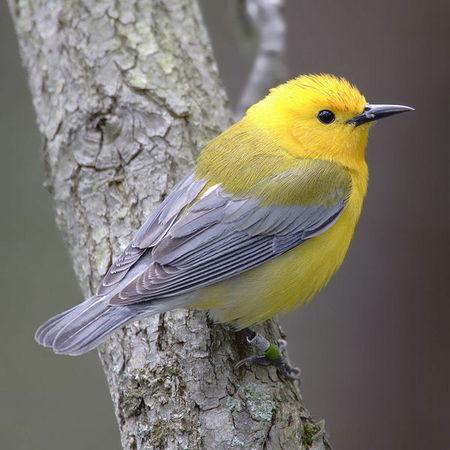Thousands of people will be out and about to enjoy International Dawn Chorus Day this Sunday, May 3. Some places are more nearly ideal than others. Early risers have a special treat in store for them at South Carolina’s Congaree National Park.
In case the terminology is unfamiliar, the dawn chorus is the collective voice of songbirds communicating with each other as night gives way to daylight. The singing is for the main purpose of defending territory and attracting mates, so it is most prominent in the spring. At some locations the singing may be loud enough to drown out other sounds and make it hard to sleep.
But why would you want to sleep while there's a dawn chorus to be enjoyed?
You don’t need to be an avid birdwatcher to appreciate the “feels great to be alive” wonder of the of dawn chorus. But you do need to be an early riser. The singing commences in the twilight of very early morning, a half-hour or more before full light, and builds to a crescendo as birds with lower perches and smaller eyes perceive the light and start chiming in.
It seems that just about everything gets internationally organized if you wait long enough, and so it’s been with the dawn chorus. The Wildlife Trust for Birmingham and the Black Country organized the initial Dawn Chorus Day, a small gathering at Mosely Bog in England’s West Midlands, back in 1984. A quarter-century later, International Dawn Chorus Day is an annual “first Sunday in May” event that thousands of people look forward. The more elaborate DCD events have corporate sponsors, get a good deal of publicity, and offer expert guides and hearty breakfasts.
While Dawn Chorus Day is most popular in the UK, which has several hundred organized events, it is celebrated in many different countries around the globe.
Dawn Chorus Day has not yet caught on big in America’s National Park System, but we can expect that to happen in the fullness of time. Meanwhile, some NPS units are already up to speed Dawn Chorus-wise. Congaree National Park in central South Carolina is perhaps the most conspicuous example.
The Friends of Congaree Swamp organized the first Dawn Chorus at the park in 2005. It’s an especially good venue for the Dawn Chorus because the park (formerly Congaree Swamp National Monument) is one of the best birding places in the United States. Small wonder that the American Bird Conservancy and Birdlife International named Congaree a Globally Important Bird Area in 2001.
One of the park’s main assets is its unusually large numbers of breeding birds, including many neotropical migrants that winter over in Mexico, Central America, the Caribbean, or South America. In addition to dozens of species of songbirds, people participating in Congaree’s Dawn Chorus can expect to hear several species of frogs, and if they get there on time (5:00 a.m.), a pre-dawn chorus of barred owls, whip-poor-wills, chuck-will's-widows, and night-migrating thrushes.
Bird song experts will be on hand for Congaree’s Dawn Chorus outing, which will be led this year by Donna Slyce Bailey. A sumptuous breakfast prepared by FOCS members is scheduled for 7:30. There is no charge for the Dawn Chorus outing or the breakfast.
For more information about this year’s Dawn Chorus at Congaree, visit this site or contact FOCS President John Grego at [email protected].




Add comment